Effect of Abrasive Machining on the Electrical Properties Cu86Mn12Ni2 Alloy Shunts
Abstract
:1. Introduction
2. Experimental Procedures
2.1. Materials
2.2. Abrasive Trimming System
2.3. Characterization
3. Results and Discussion
3.1. Temperature Co-Efficient of Resistance (TCR)
3.2. High Power Performance
3.3. High Temperature Performance
4. Conclusions
Acknowledgments
Author Contributions
Conflicts of Interest
References
- O’Driscoll, E.; O’Donnell, G.E. Industrial power and energy metering—A state-of-the-art review. J. Clean. Prod. 2013, 41, 53–64. [Google Scholar] [CrossRef]
- Manov, V.; Adar, E.; Geller, M.; Sorkine, E.; Margolin, I. Amorphous Metallic Alloy Electrical Heater Systems. U.S. Patent 5,641,421, 24 June 1997. [Google Scholar]
- Haynes, W.M. CRC Handbook of Chemistry and Physics; CRC Press: Boca Raton, FL, USA, 2014. [Google Scholar]
- Casey, K. The Need for Current Sense, Circuit Protection and Communications in Smart Meters; Electronic Design: New York, NY, USA, 2011. [Google Scholar]
- Weranga, K.S.K.; Chandima, D.P.; Kumarawadu, S.P. Smart metering for next generation energy efficiency & conservation. In Proceedings of the 2012 IEEE Innovative Smart Grid Technologies—Asia (ISGT Asia), Tianjin, China, 21–24 May 2012. [Google Scholar]
- Isabellenhütte Company. Low-Ohmic Precision and Power Resistors; Isabellenhütte Company: Dillenburg, Germany, 2012; p. 14. [Google Scholar]
- Alafogianni, M.; Penlington, R.; Birkett, M. Resistor trimming geometry; past, present and future. In IOP Conference Series: Materials Science and Engineering; IOP Publishing: Bristol, UK, 2016. [Google Scholar]
- Sandborn, P.; Sandborn, P.A. A Random Trimming Approach for Obtaining High-Precision Embedded Resistors. IEEE Trans. Adv. Packag. 2008, 31, 76–81. [Google Scholar] [CrossRef]
- Misti, S.N.; Birkett, M.; Bell, D.; Penlington, R. Practical Implementation of a Concurrent Trimming Approach for Manganin Shunt Resistors. Int. J. Comput. Commun. Instrum. Eng. 2015, 2, 81–85. [Google Scholar]
- Meaden, G.T. Electrical Resistance of Metals; Springer: New York, NY, USA, 2013. [Google Scholar]
- Dyos, G. The Handbook of Electrical Resistivity: New Materials and Pressure Effects; IET Materials and Device Series 13; The Institution of Engineering and Technology: London, UK, 2012. [Google Scholar]
- Zhu, X.; Kotadia, H.; Xu, S.; Lu, H.; Mannan, S.; Bailey, C.; Chan, Y. Modeling Electromigration for Microelectronics Design. J. Comput. Sci. Technol. 2013, 7, 251–264. [Google Scholar] [CrossRef]
- Ohring, M. Reliability and Failure of Electronic Materials and Devices; Academic Press: Cambridge, MA, USA, 1998. [Google Scholar]
- Reed-Hill, R.E.; Abbaschian, R. Physical Metallurgy Principles; Van Nostrand: New York, NY, USA, 1973. [Google Scholar]
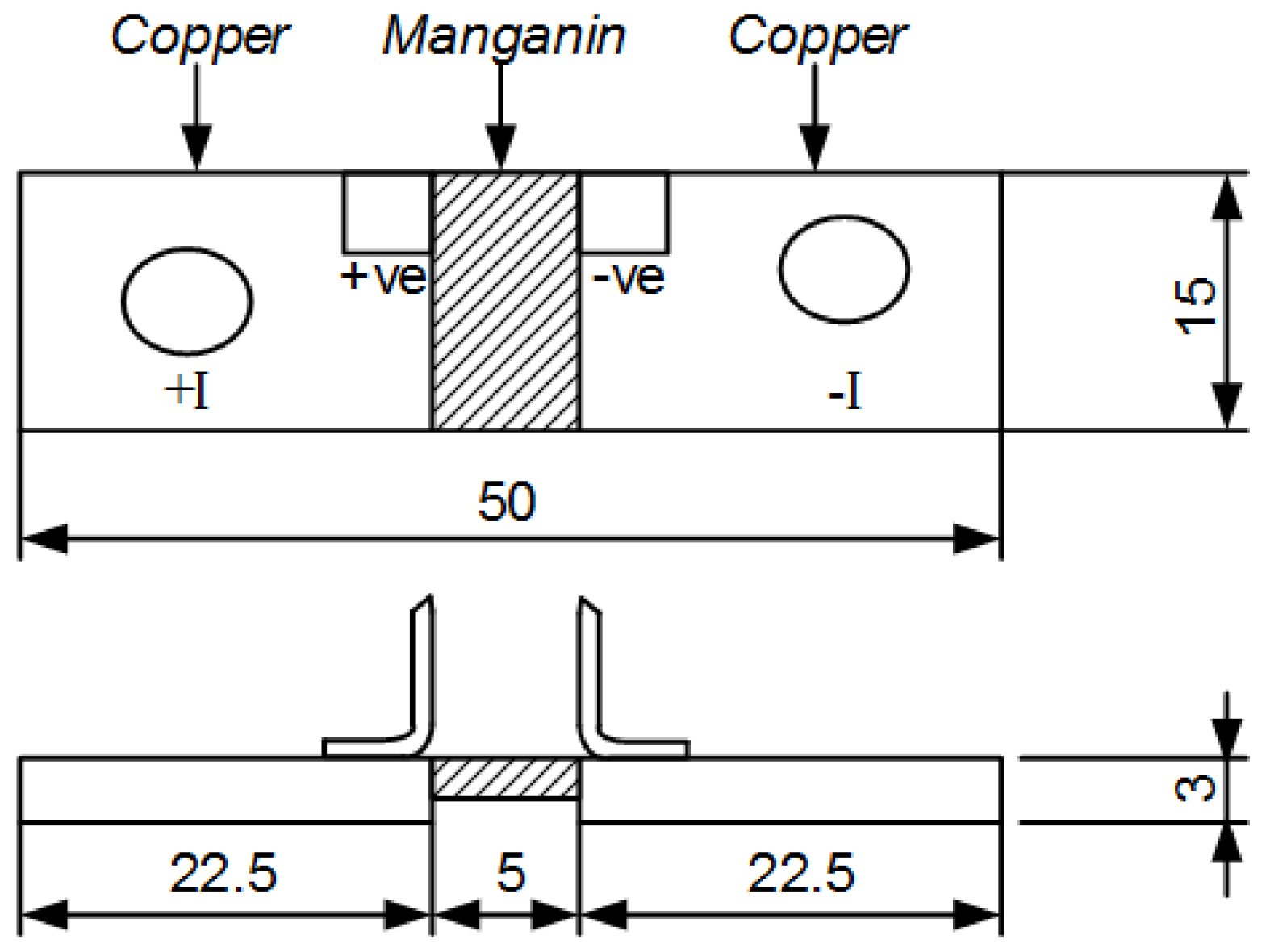
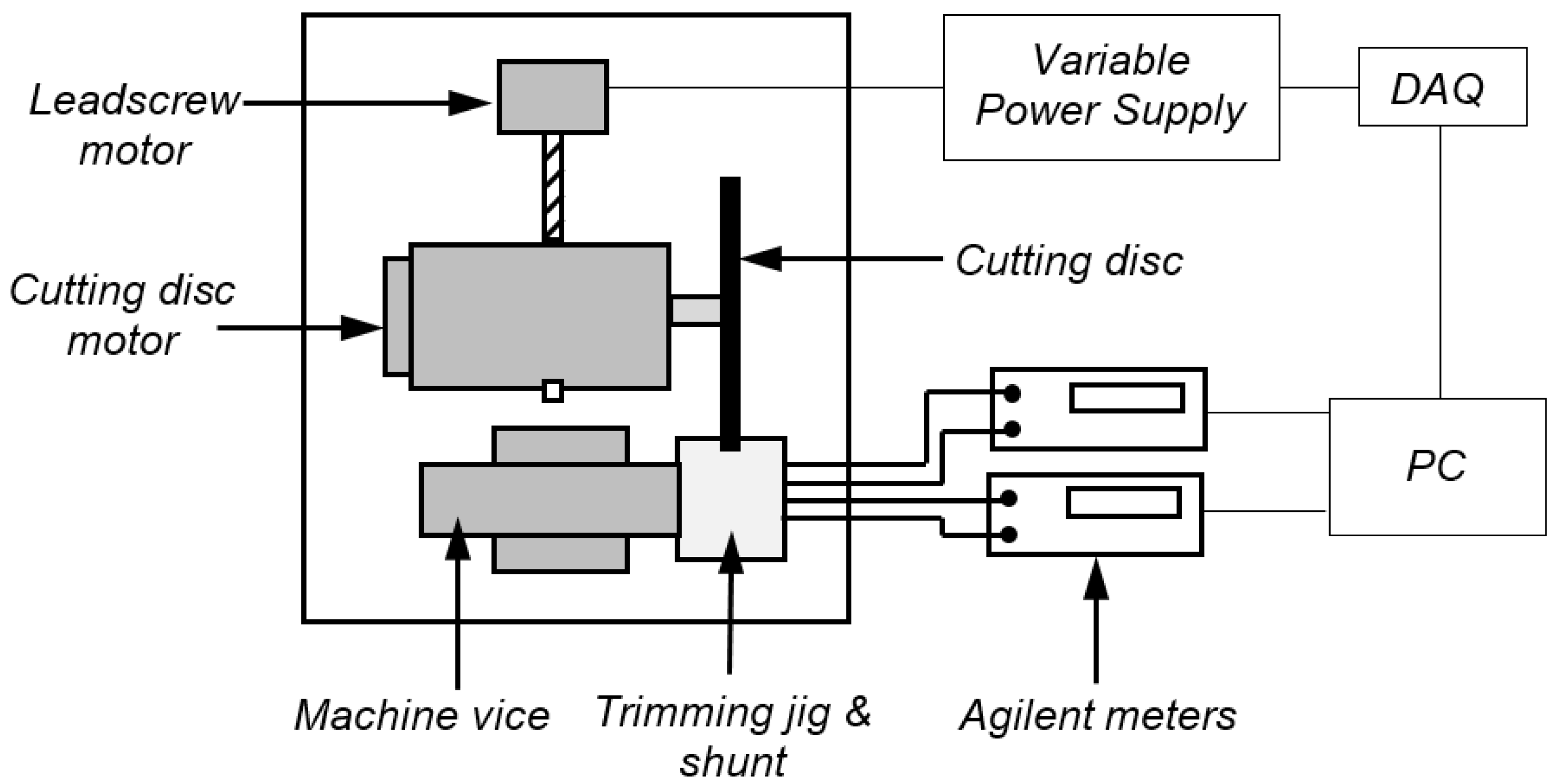
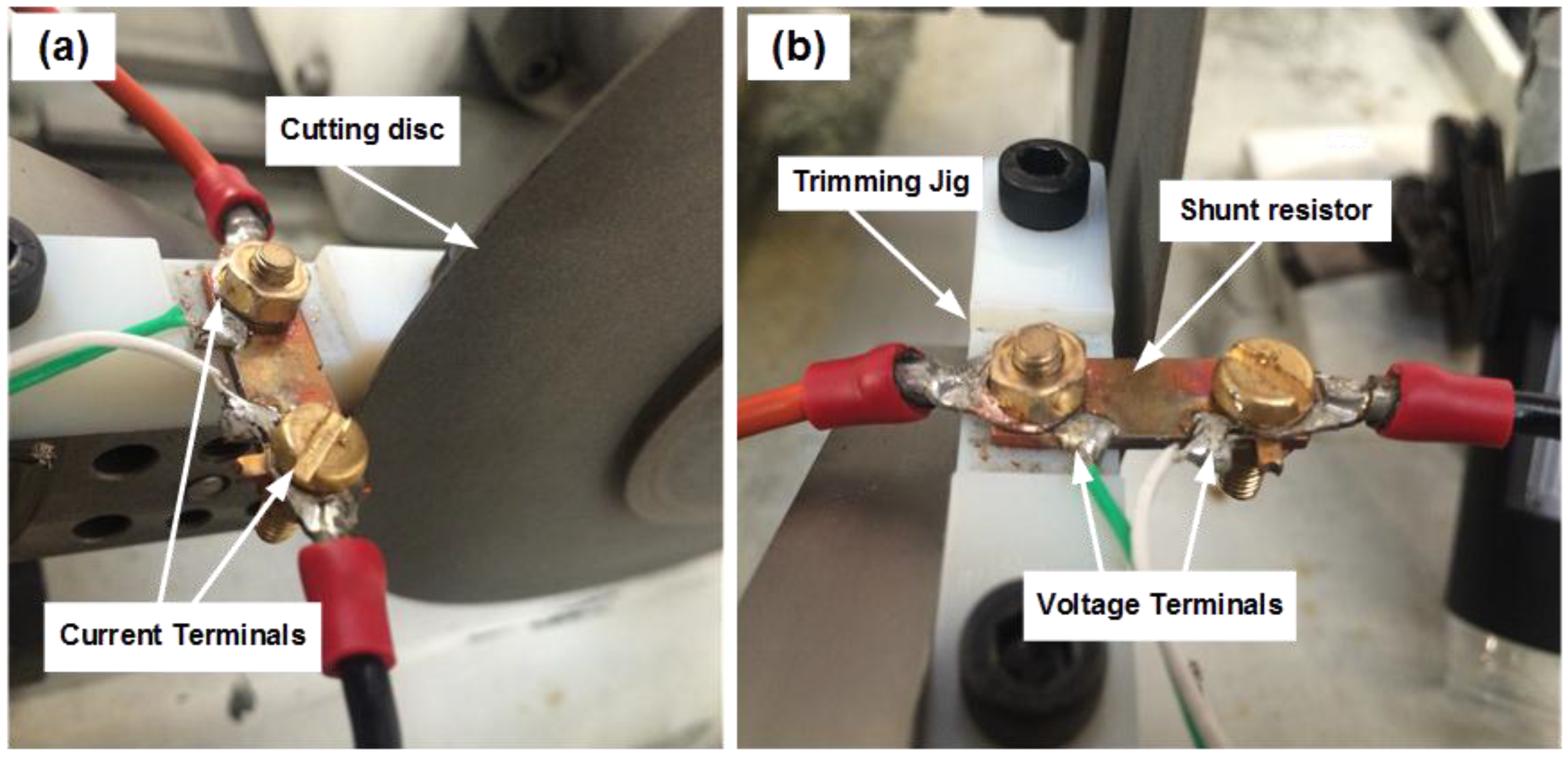
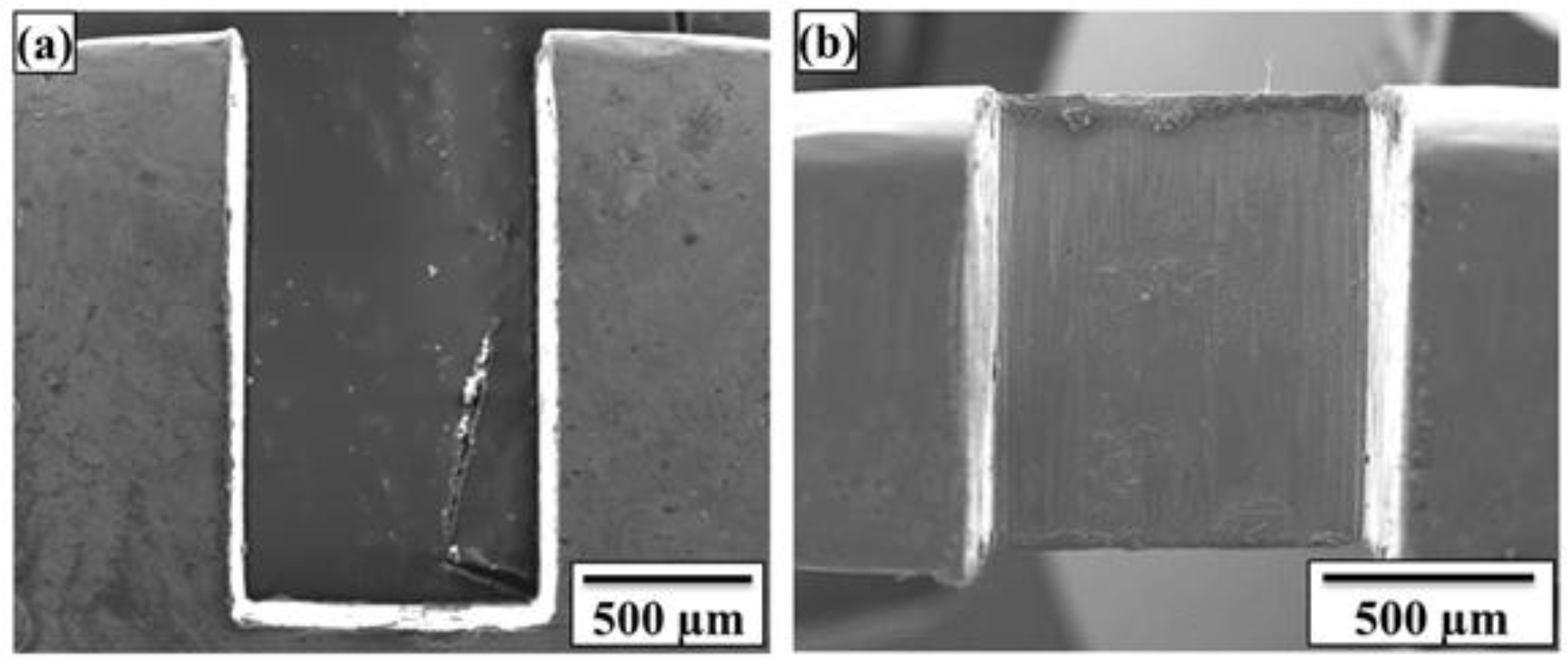

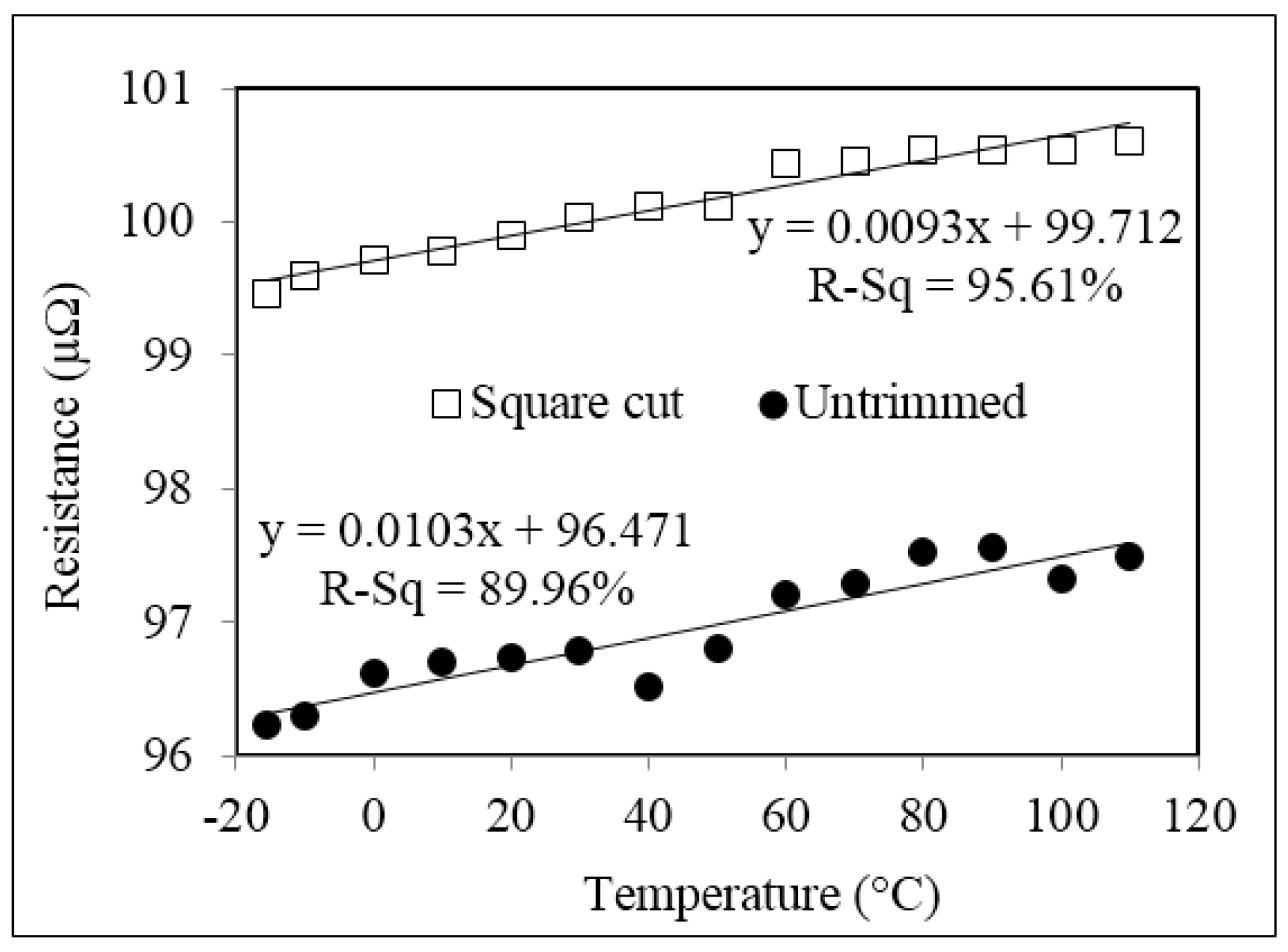
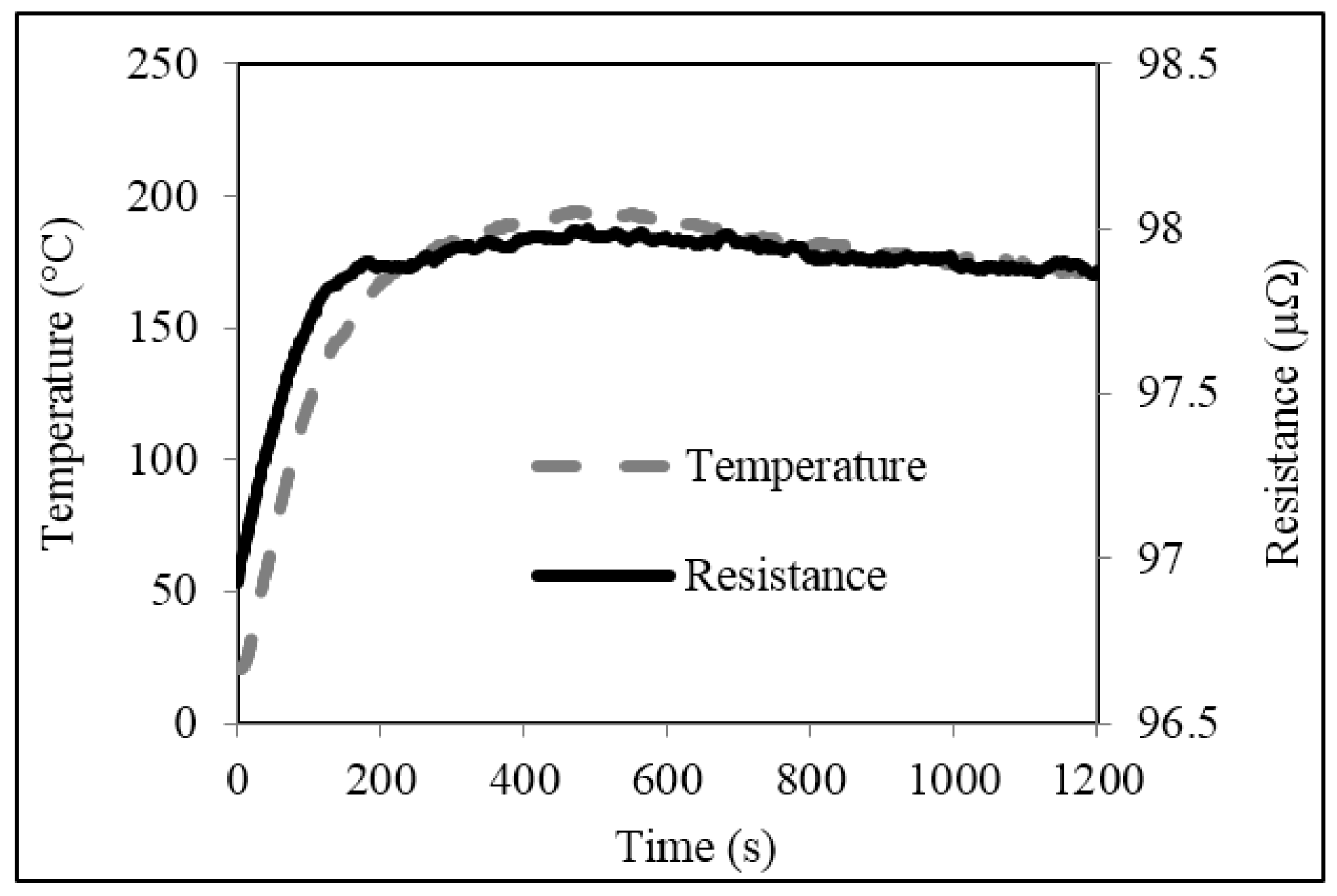
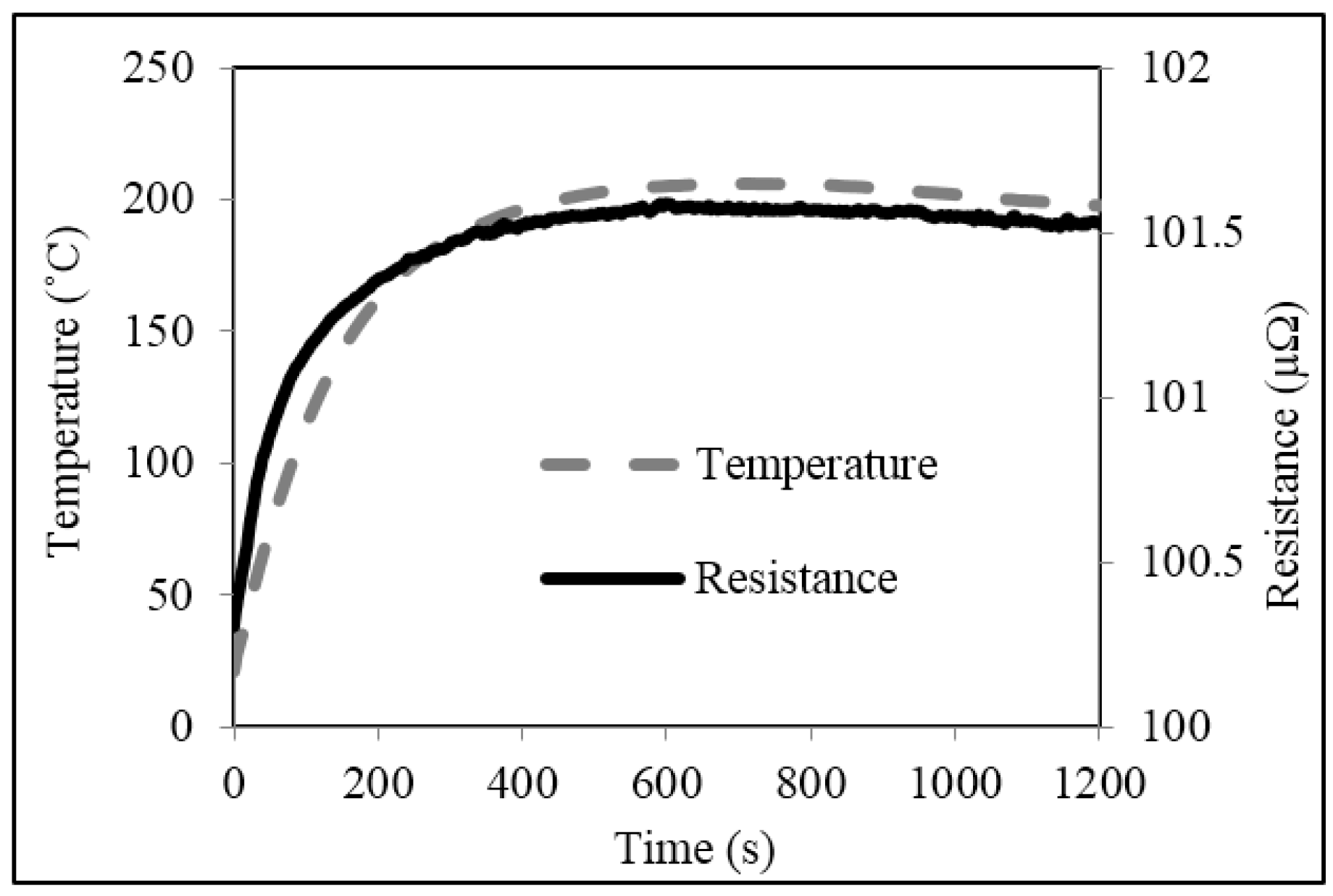
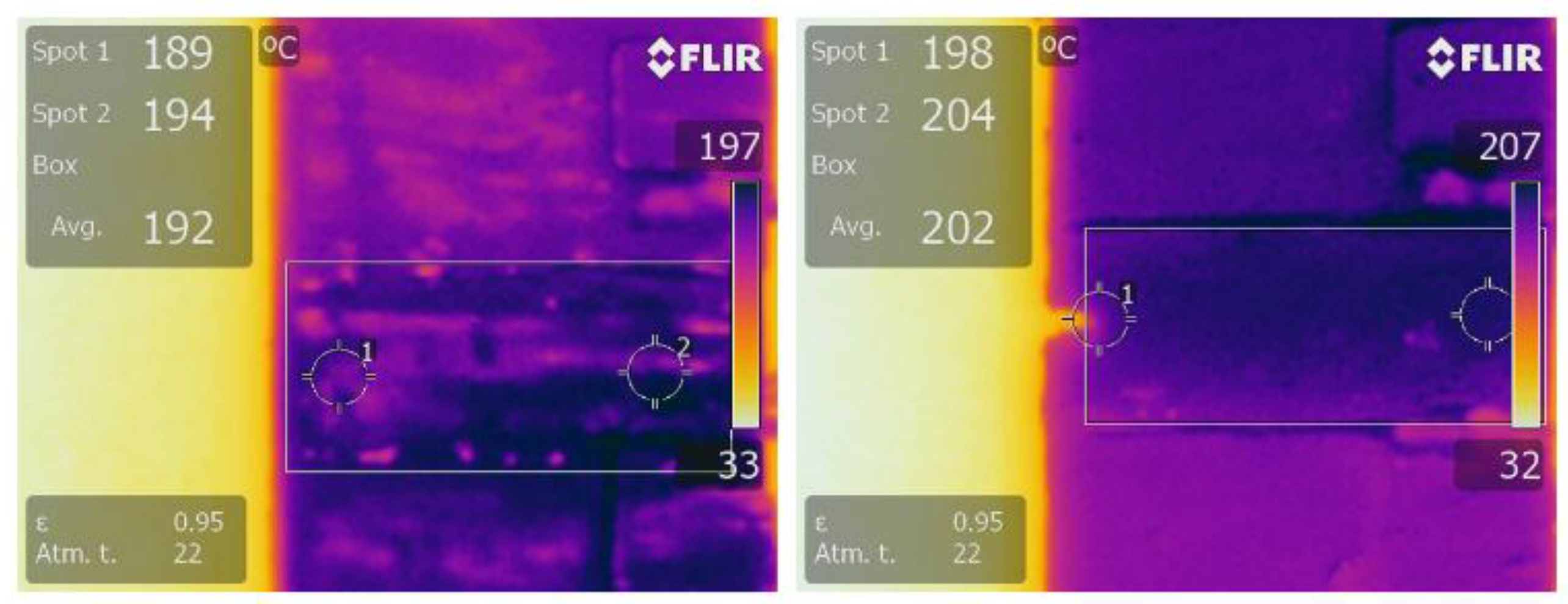
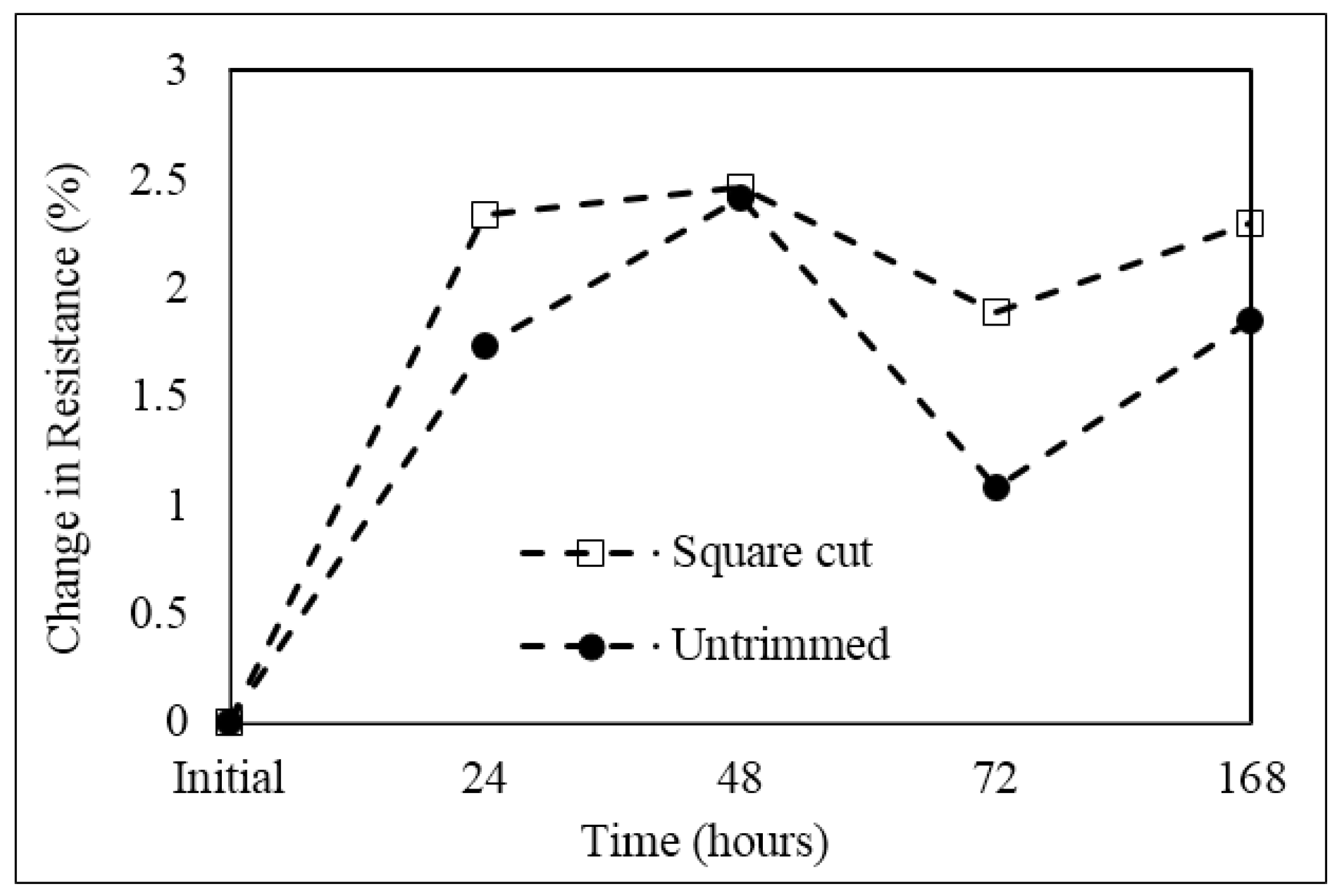
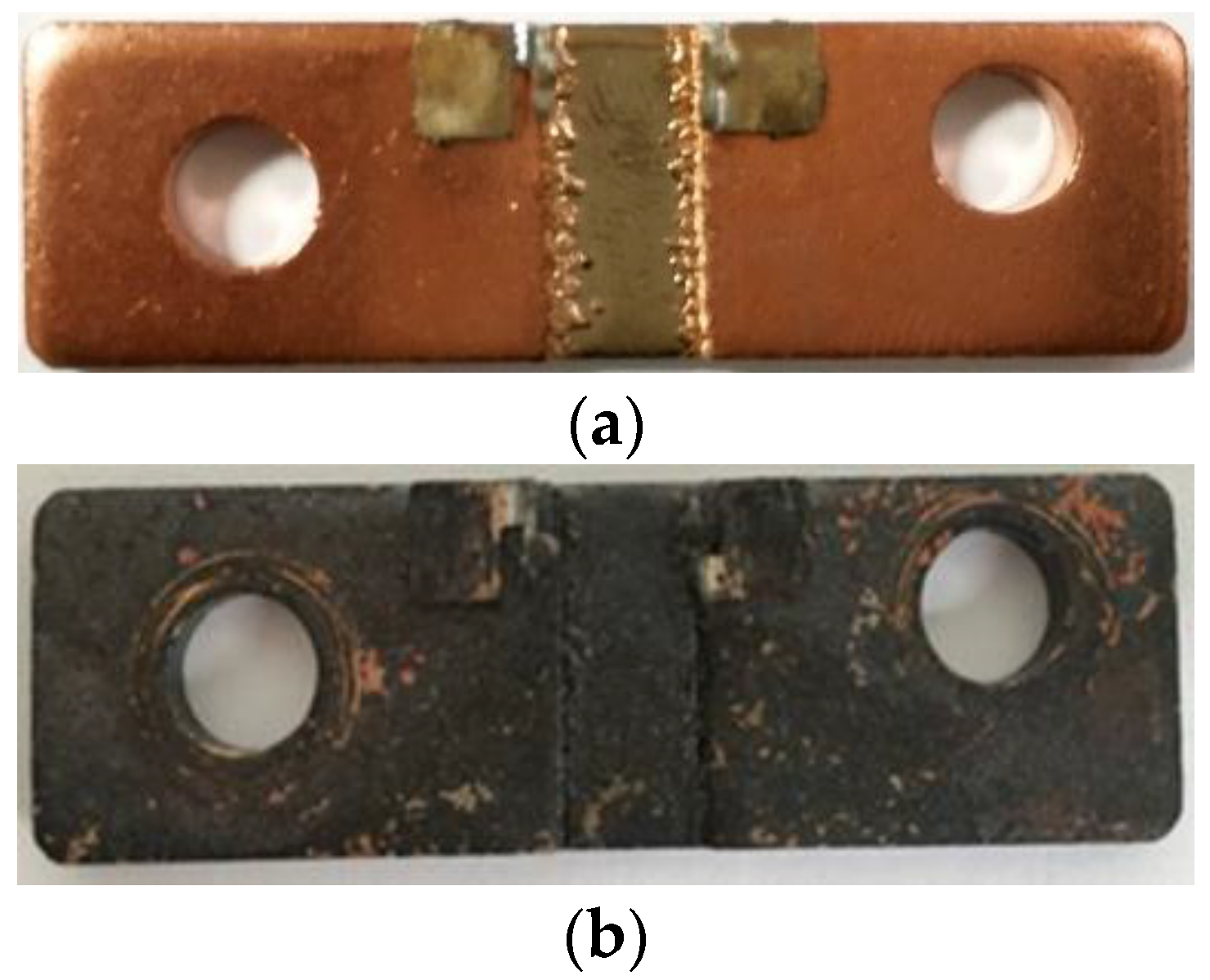
| Spectrum No. | wt % Oxygen | |||
|---|---|---|---|---|
| Untrimmed | Square Cut | |||
| Before | After | Before | After | |
| 1 | 4.42 | 10.49 | 6.05 | 13.95 |
| 2 | 2.01 | 16.72 | 3.60 | 18.53 |
| 3 | 2.29 | 6.81 | 3.61 | 13.87 |
| 4 | 3.08 | 14.24 | 5.45 | 15.39 |
| 5 | 4.60 | 9.16 | 6.71 | 9.83 |
| 6 | 4.17 | 14.09 | 7.76 | 16.69 |
| Average | 3.43 | 11.92 | 5.53 | 14.71 |
© 2017 by the authors. Licensee MDPI, Basel, Switzerland. This article is an open access article distributed under the terms and conditions of the Creative Commons Attribution (CC BY) license (http://creativecommons.org/licenses/by/4.0/).
Share and Cite
Misti, S.N.; Birkett, M.; Penlington, R.; Bell, D. Effect of Abrasive Machining on the Electrical Properties Cu86Mn12Ni2 Alloy Shunts. Materials 2017, 10, 876. https://doi.org/10.3390/ma10080876
Misti SN, Birkett M, Penlington R, Bell D. Effect of Abrasive Machining on the Electrical Properties Cu86Mn12Ni2 Alloy Shunts. Materials. 2017; 10(8):876. https://doi.org/10.3390/ma10080876
Chicago/Turabian StyleMisti, Siti Nabilah, Martin Birkett, Roger Penlington, and David Bell. 2017. "Effect of Abrasive Machining on the Electrical Properties Cu86Mn12Ni2 Alloy Shunts" Materials 10, no. 8: 876. https://doi.org/10.3390/ma10080876





